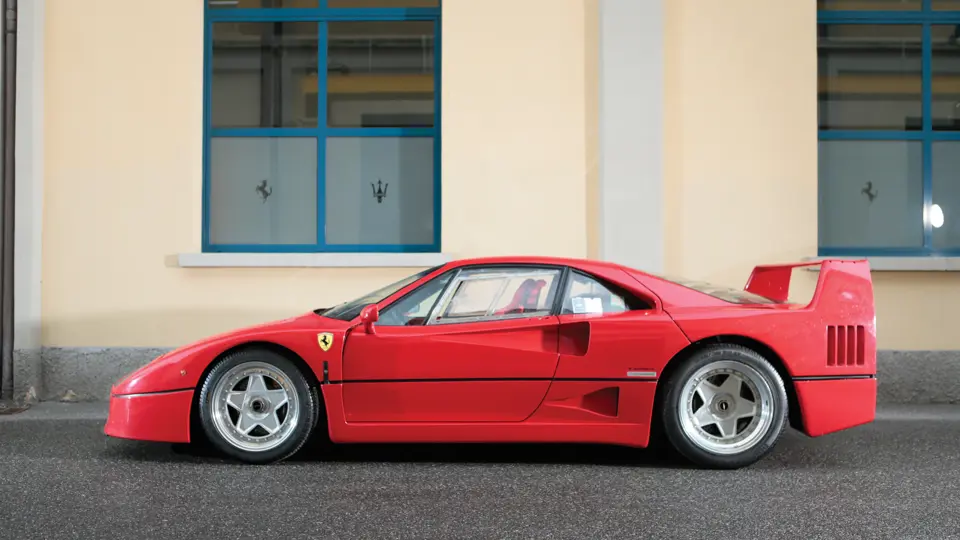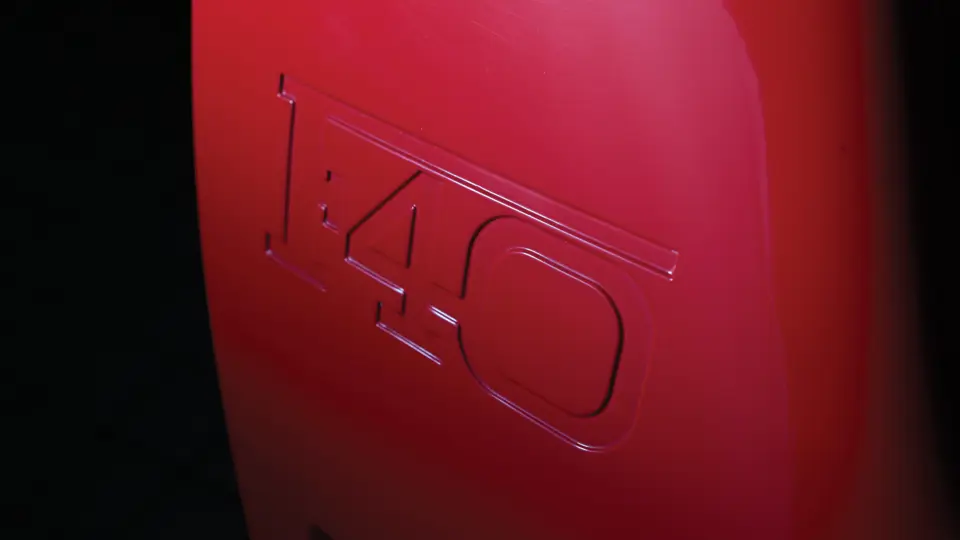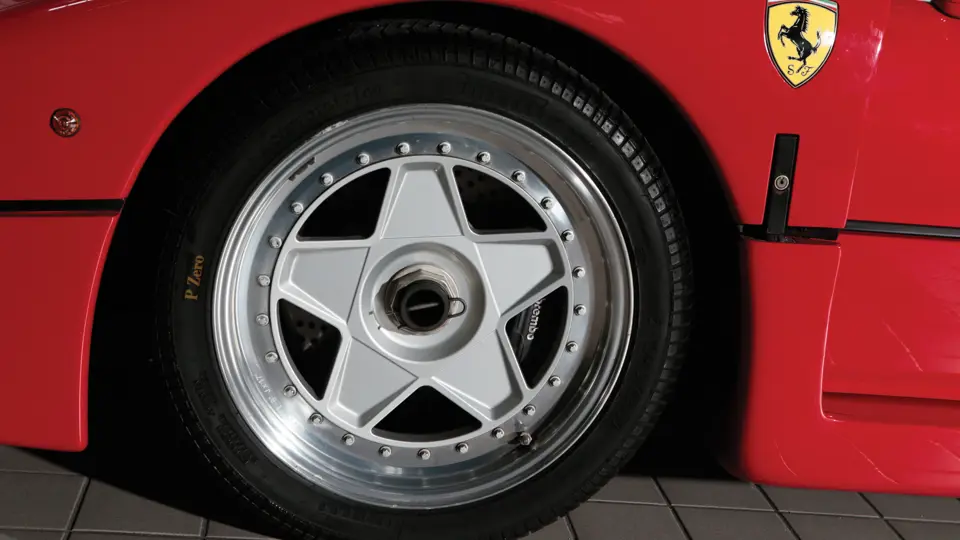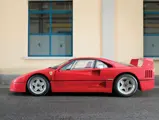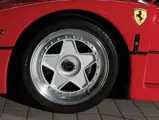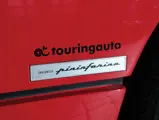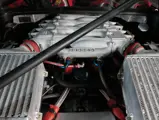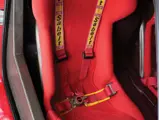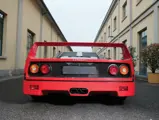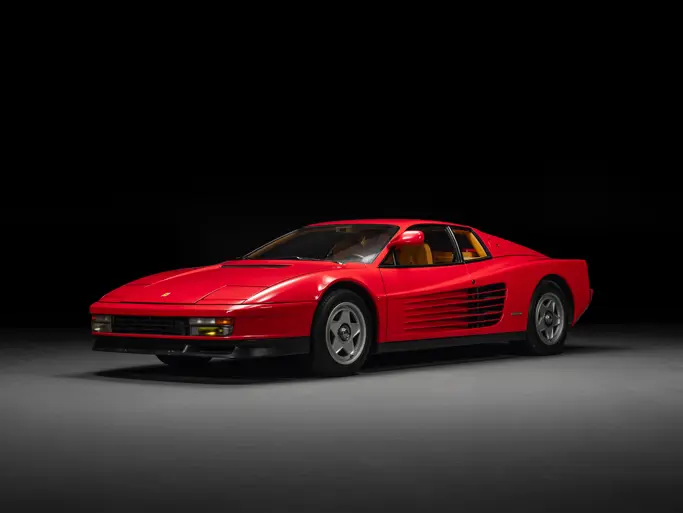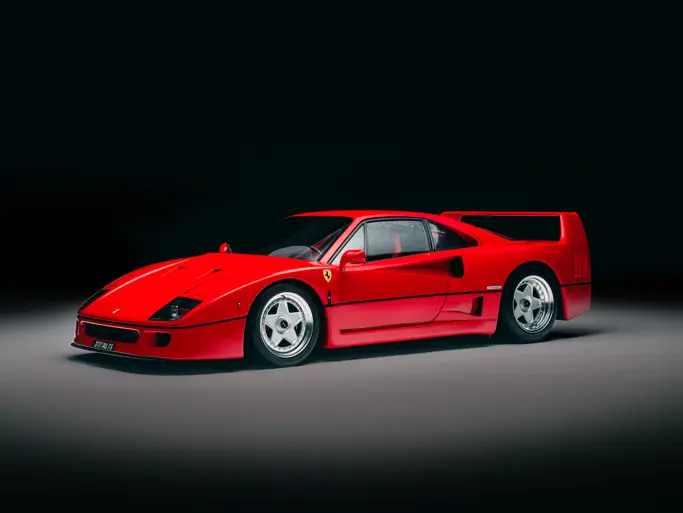478 bhp, 2,936 cc dual overhead camshaft twin-turbocharged V-8 engine with Weber-Marelli fuel injection, five-speed manual gearbox, independent front and rear double-wishbone suspension, and four-wheel disc brakes. Wheelbase: 2,450 mm (96.5 in.)
At a press conference in Maranello on 12th July 1987, a frenzied group of journalists gathered to hear Enzo Ferrari explain how just one year earlier, he had approached his engineering team with the idea of a 40th anniversary model that would showcase the ultimate in Ferrari technology and styling. When the curtain lifted on the resulting F40 a few moments later, it was clear that the design brief of utmost excellence had been aptly fulfilled.
Mechanically, the F40 bore much in common with Ferrari’s preceding supercar, the 288 GTO, and in fact, it was closely based on a race-intended version of the GTO that never saw competition, due to a change in regulations. The F40’s type F120 AB chassis shared the wheelbase dimensions of its predecessor, but it featured a wider track and an increased use of carbon fibre and other race-developed technologies. The 288’s twin-turbocharged V-8 was bored to displace almost three litres, which, in combination with additional tuning, contributed to an output of 478 horsepower, making the F40 Ferrari’s most powerful road car to date.
Under the direction of Leonardo Fioravanti, the body designer responsible for the Daytona and the Berlinetta Boxer, Pininfarina took an initial wedge shape and developed it in a wind tunnel, optimising aerodynamic flow and downforce. Built out of carbon fibre and Kevlar, the lightweight body was peppered with NACA ducts that contributed to cabin and brake cooling, and it was punctuated by a louvered Plexiglas engine cover that revealed the prodigious V-8 underneath.
Approximately 250 kilograms lighter than its German competitor, the Porsche 959, the F40 offered breath-taking performance, hitting 60 mph in 3.8 seconds, with a top speed of 201 mph. The race-engineered chassis and engine were complemented with competition-oriented features (or a lack thereof), such as no anti-lock brakes or steering assist. Claiming a certain distinction as the last Maranello road car to be engineered under Enzo Ferrari’s direct leadership, the F40 remains one of the most celebrated high-performance automobiles ever built, and the model occupies an important link in the Ferrari supercar lineage, amid the 288 GTO, F50, Enzo, and now, LaFerrari.
Delivered in April 1989, this F40 was first registered on the 1st of June to Birone Germano, of Mondovi, Italy. An early car with Plexiglas windows and without active suspension or catalytic converters, chassis number 80715 was finished in Rosso Corsa paint and appointed with red cloth Stoffa Vigogna upholstery. The car was purchased by the second owner in November 1998, and it has experienced mild use and fastidious upkeep ever since, whilst enjoying the company of some of Maranello’s most legendary models.
Currently displaying just over 40,000 kilometres, and accompanied by a complete set of original manuals, this car has been factory-certified by Ferrari Classiche and was recently serviced by Rossocorsa in Milan, including the all-important belt change. It is an outstanding example of one of Ferrari’s most revered street machines, and it will be sure to deliver outrageous performance and inimitable style whether on the starting grid or the concours field.




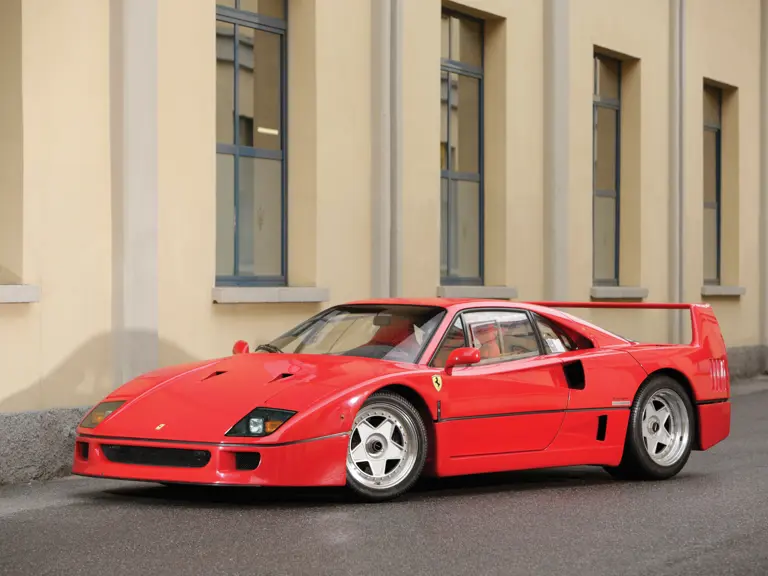
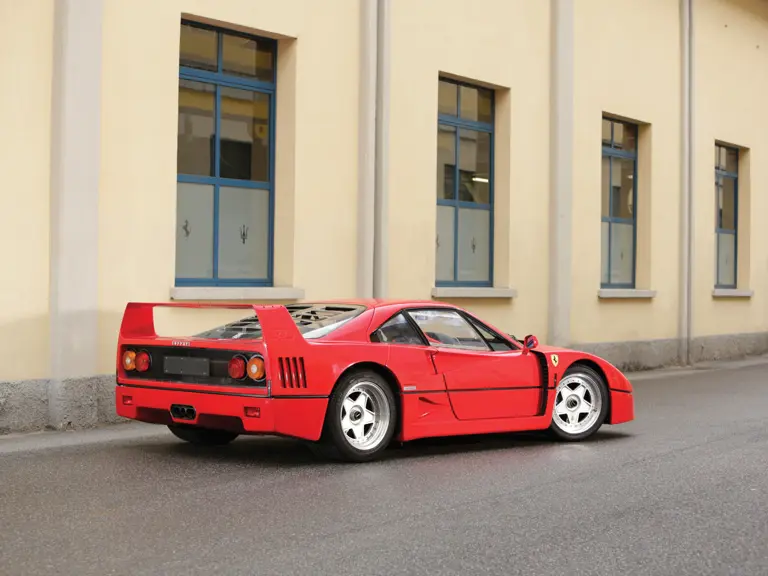
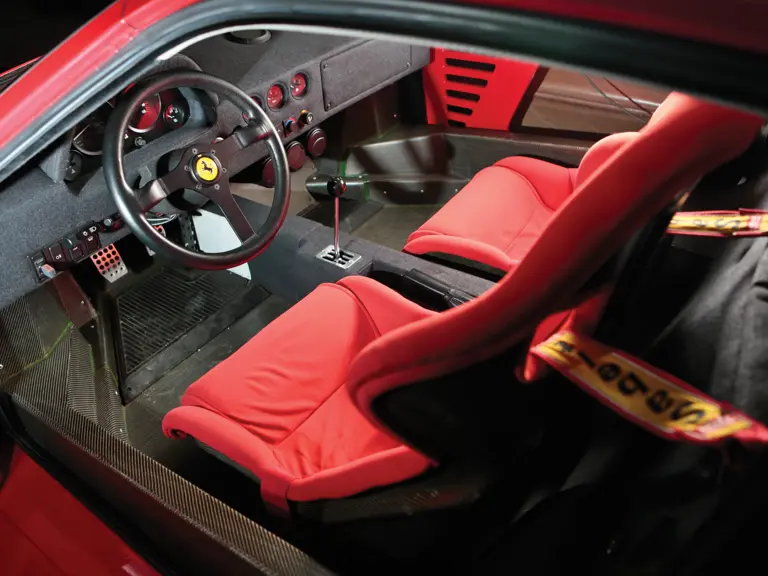
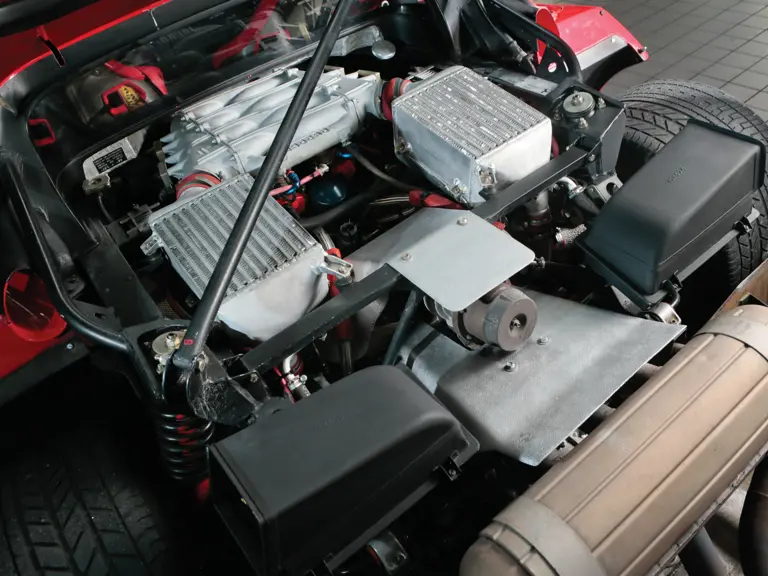
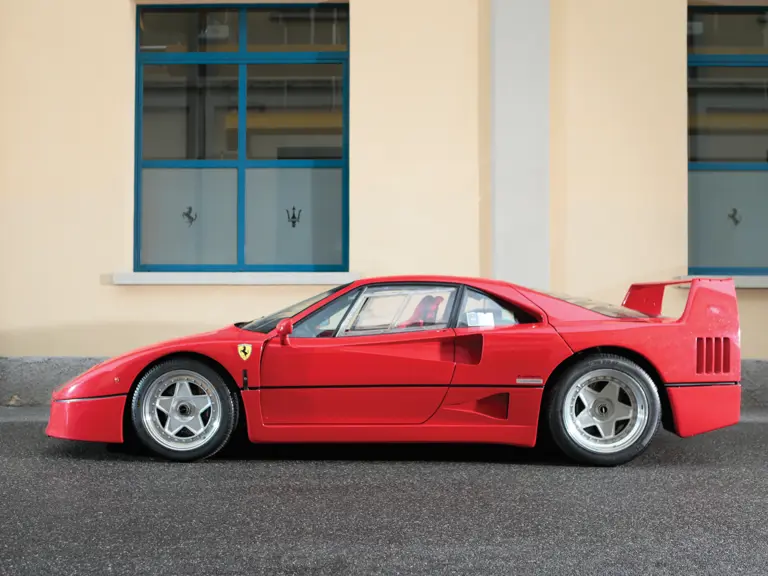

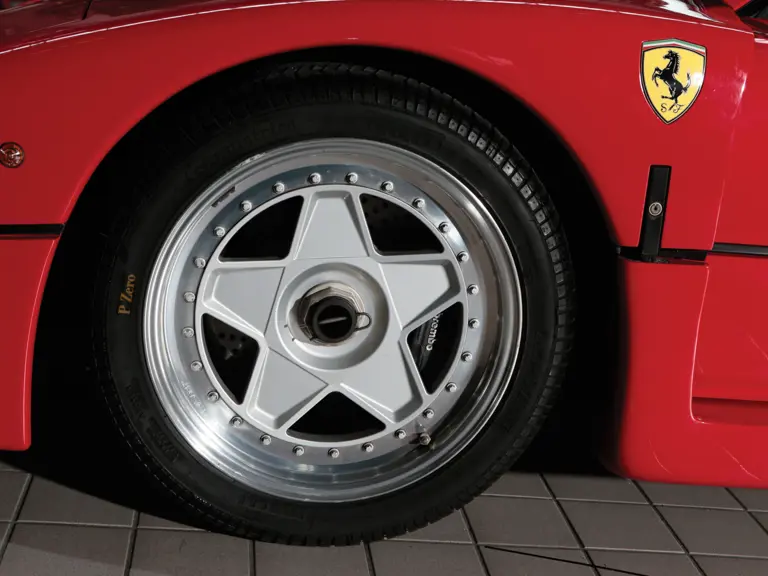
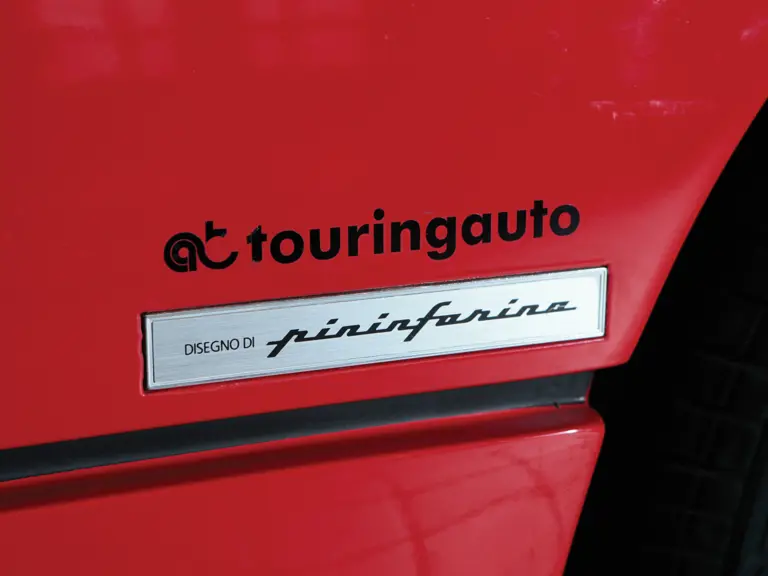
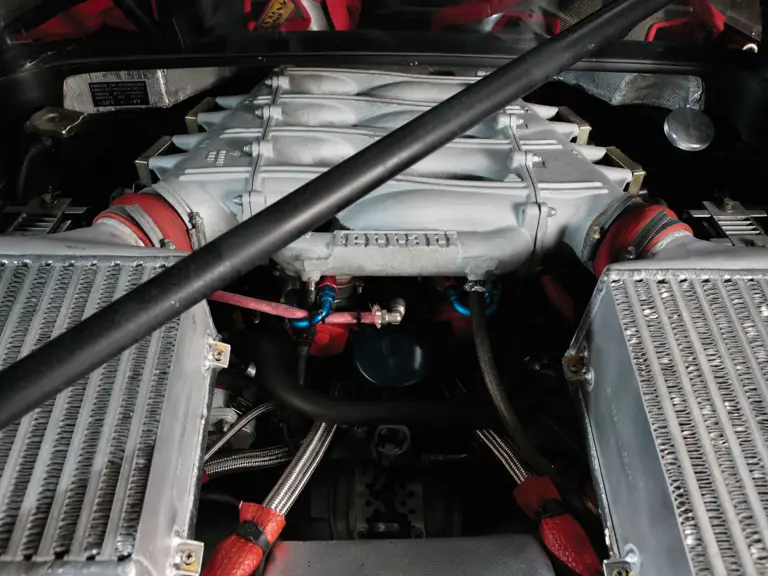
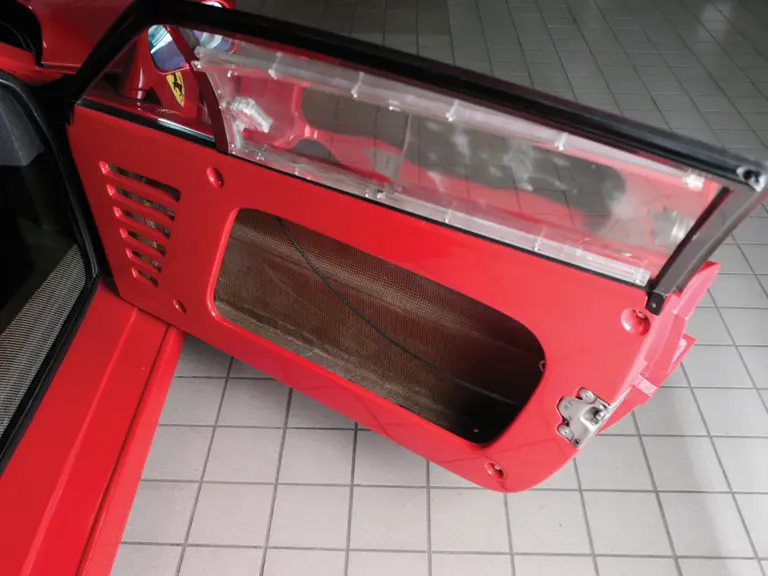
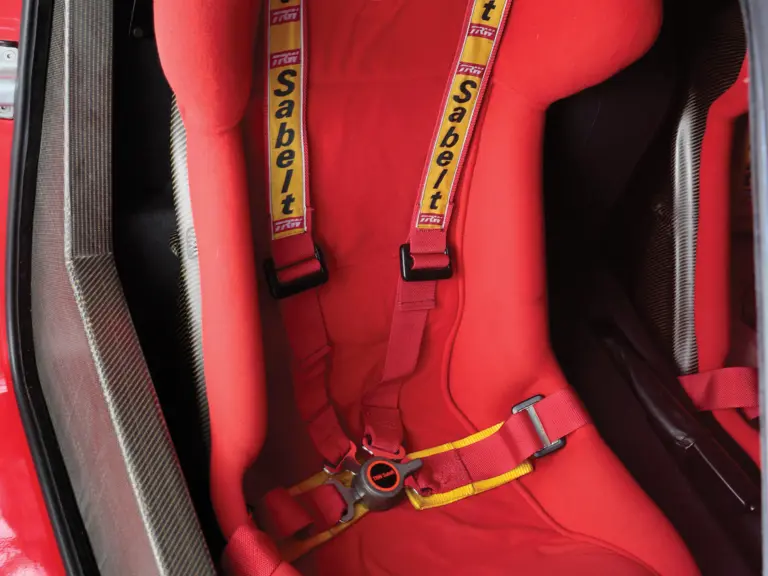

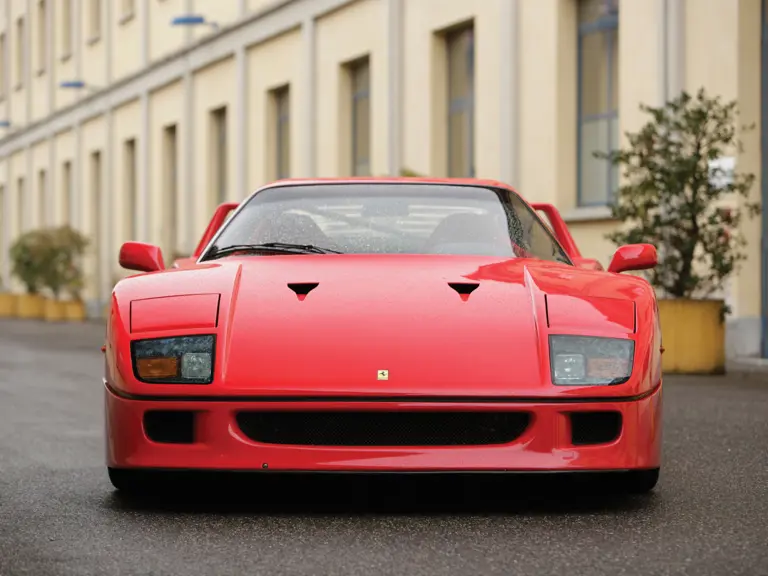
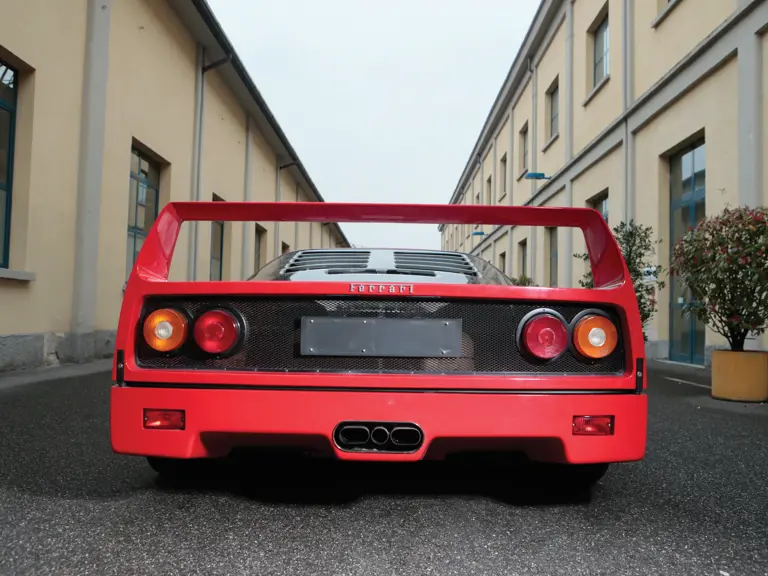
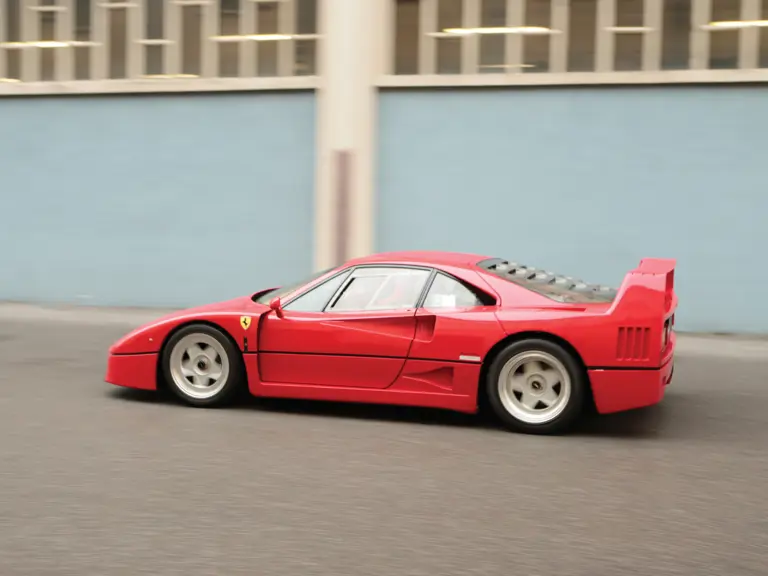
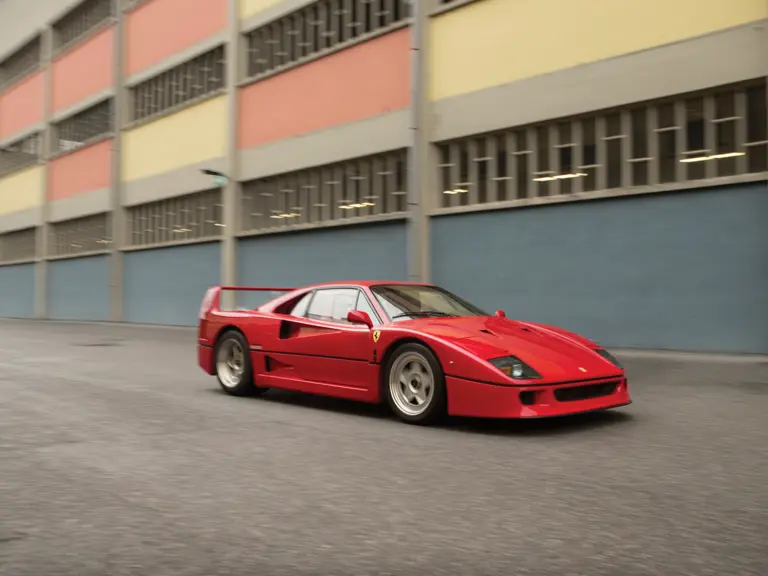
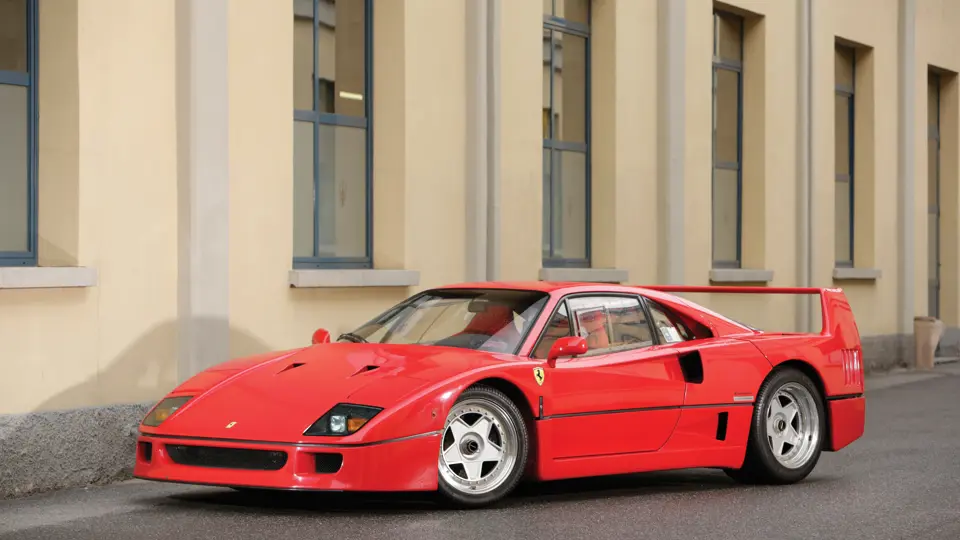
 | Cernobbio, Italy
| Cernobbio, Italy
